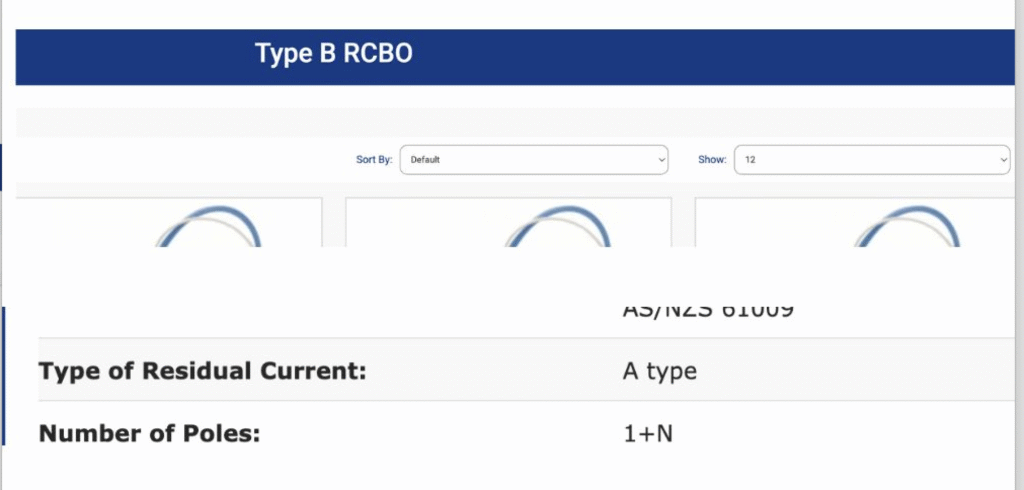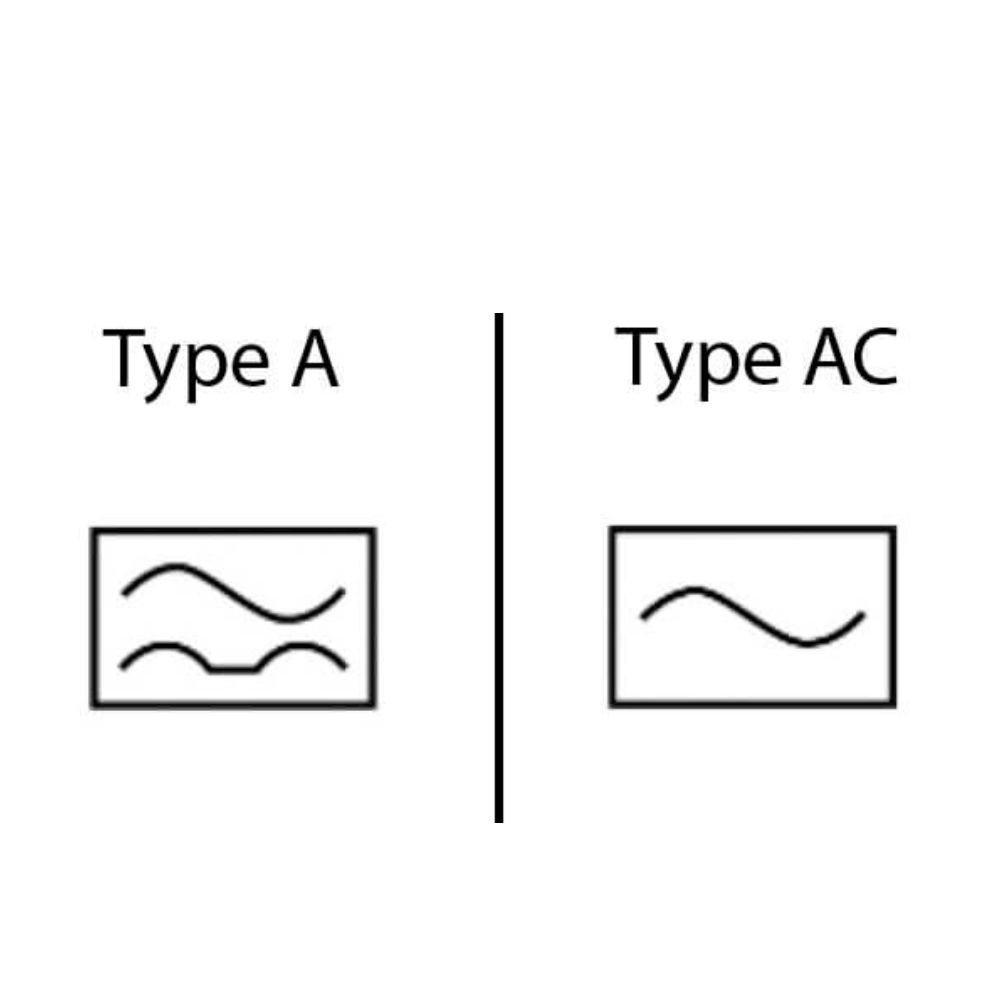Type A RCBOs Explained: What They Are, Why You Need Them & What’s Next (2025 Update)
Type A RCBOs – Residual Current Circuit Breakers with Overcurrent protection – are a must in modern electrical installations. They protect against earth faults, overloads, and are now the standard under UK wiring regulations for most residential and commercial circuits.
In this comprehensive guide, you’ll learn:
- What a Type A RCBO does
- Why Type A is preferred over Type AC
- Where Type B RCBOs are used
- What to watch out for when reading “Type B” on listings
- What’s coming soon (hint: real Type B RCBOs from Live Electrical!)
⚙️ What is a Type A RCBO?
A Type A RCBO is a device that:
- Combines RCD protection (earth leakage) and MCB protection (overcurrent)
- Detects both AC and pulsating DC leakage currents (up to 6 mA)
- Trips when it senses an imbalance or overload, providing life-saving disconnection
It’s ideal for:
- Circuits with electronics (chargers, washing machines, LED drivers)
- Socket outlets
- Lighting circuits
- Showers and cookers
❌ Is There Any Situation Where You Must Not Use Type A and Must Use Type AC?
No — there is no situation in modern UK wiring regulations where Type AC is required instead of Type A.
Type A can do everything Type AC can, plus more.
Type A vs Type AC vs Type B RCBOs
| Type | Detects | Common Usage |
|---|---|---|
| Type AC | Pure AC leakage | Obsolete – no longer recommended |
| Type A | AC + pulsating DC | Most modern home & office circuits |
| Type B | All above + smooth DC | EV chargers, solar PV, UPS, drives |
BS 7671:2018 recommends Type A as the minimum for final circuits with electronics. Type AC is now discouraged.
Clearing Up the Confusion: “Type B RCBO” vs “Curve B RCBO”
Many people confuse “Type B RCBO” with Curve B tripping characteristics. These are not the same.
- Type B RCBO (RCD Type) → Detects smooth DC leakage.
- Curve B (MCB Trip Curve) → Tripping at 3–5× rated current. Standard in domestic installs.
⚠️ A product listed as “10A Type B RCBO” could just be Curve B, not a true Type B RCD. Always check the datasheet.
️ We’ve added a screenshot example of this confusion from a competitor listing (not linked to avoid promoting them) – See below:

EV Chargers & PV: Why Type B Is Becoming Necessary
- EV Chargers often leak smooth DC. If the charger lacks built-in DC detection (RDC-DD), a true Type B RCBO is required.
- Solar PV inverters also emit complex leakage currents. Many setups now require Type B protection, particularly under IEC 62109-1 and BS 7671 Section 712.
Coming Soon: Type B RCBOs from Live Electrical
We’re excited to announce that we’ll soon be stocking genuine Type B RCBOs from Live Electrical. These detect AC, pulsating DC, and smooth DC leakage, and are perfect for:
- EV circuits
- PV systems
- Specialist industrial installations
Launching soon – stay tuned!
Frequently Asked Questions
Section 1: General & Technical RCBO Questions
Residual Current Circuit Breaker with Overcurrent protection.
It combines RCD and MCB protection, detecting AC and pulsating DC leakage while also protecting against overloads and short circuits.
It depends on the application.
Type A RCBOs provide both earth leakage and overcurrent protection in a single device. This makes them ideal for individual circuit protection, especially in RCBO-based consumer units.
A standalone RCD only detects earth leakage and requires additional MCBs. In some grouped or legacy systems, RCDs are still used, but RCBOs offer better selectivity and reduced nuisance tripping.
Type A detects AC and pulsating DC leakage. Type AC only detects pure AC — and is now considered outdated for modern installations.
Type A detects AC + pulsating DC faults. Type B detects all of the above plus smooth DC, making it essential for EV chargers and solar PV systems.
Note: In this context, “Type B” refers to the RCD type, not the MCB tripping curve. Always check the datasheet to avoid confusion with Curve B breakers.
No. “Type B” can refer to MCB tripping curve (common) or RCD type (rare). Always check the product spec.
Some are, but not all. Check manufacturer specs to ensure correct installation orientation.
Yes, the MCB part of the RCBO protects against overloads and short circuits.
Yes. After clearing a fault, simply switch it back on.
Yes. Like any protective device, they can degrade. Regular testing is recommended.
️ Section 2: Installation, Use & Safety Questions
Yes. They’re ideal for general-purpose circuits and modern electronic loads.
Type A is recommended — showers often include electronic controls that may emit pulsating DC.
Not always.
Double-pole (or SP&N) RCBOs are required in TT systems and recommended for EV, solar, and backup power circuits. In TN-C-S systems, single-pole RCBOs are allowed — but most modern RCBOs now include a switched neutral by default, offering added safety and isolation.
Not typically. Use a main switch and RCBOs per circuit for full protection and selectivity.
Type A if the charger has built-in DC detection
Type B if the charger does not
A Type B RCBO is typically required for solar PV systems to detect smooth DC leakage from inverters. If the inverter guarantees no DC leakage, a Type A RCBO may be used — but only if confirmed by the manufacturer.
Press the “T” button. If the unit trips, it’s working. If not, it may be faulty.
If your circuit powers anything with electronics — LEDs, chargers, appliances — you should upgrade.
Type A RCBOs were first recommended in the 18th Edition of BS 7671 in July 2018, especially where electronic loads or DC leakage were possible.
However, it wasn’t until Amendment 2 (28 March 2022) that the regulations explicitly restricted the use of Type AC RCDs to fixed equipment with no chance of DC components (Regulation 531.3.3).
Stay Connected with Electrical4Less
Want more helpful guides, product updates, and expert tips on electrical safety and installations? Follow us across social media:
YouTube
Watch installation demos, RCBO comparisons, and expert breakdowns
Subscribe to our YouTube Channel
Product highlights, behind-the-scenes content & quick tips
Follow us on Instagram
Get updates, join discussions, and ask us anything
Like our Facebook Page
References
- Martindale Electric – Leakage Current Testing Guide
- BS 7671:2018 + A2:2022 Wiring Regulations – IET
- BEAMA – “Selection of RCDs for Modern Installations” (2019)
- Electrical Safety First – RCD Report (2020)
- The-Regs.co.uk: Type B RCDs Explained
- Sparkyninja – Type A vs AC in Modern Loads
- Schneider – Type B Application White Paper












Type A RCBOs – Complete Guide